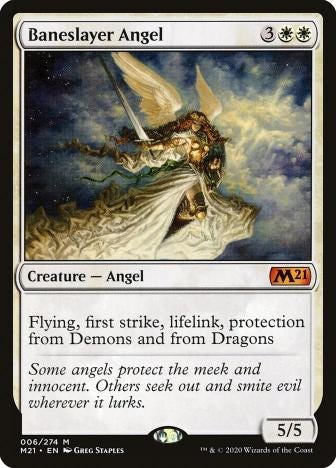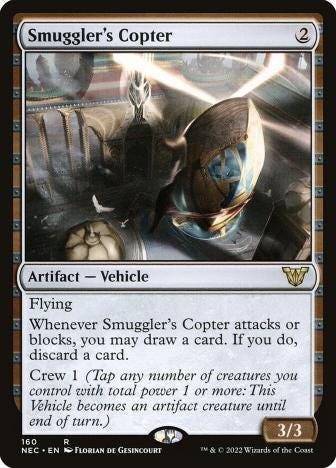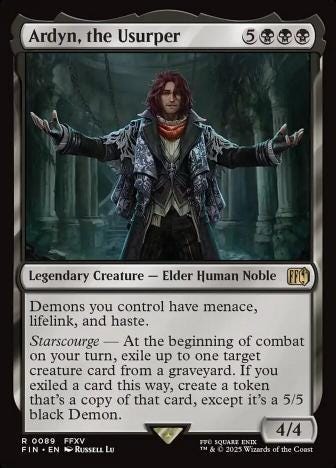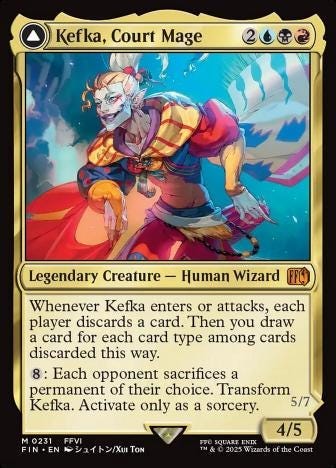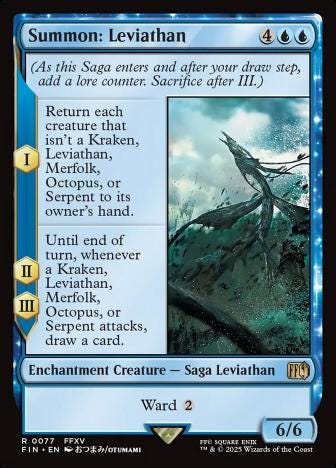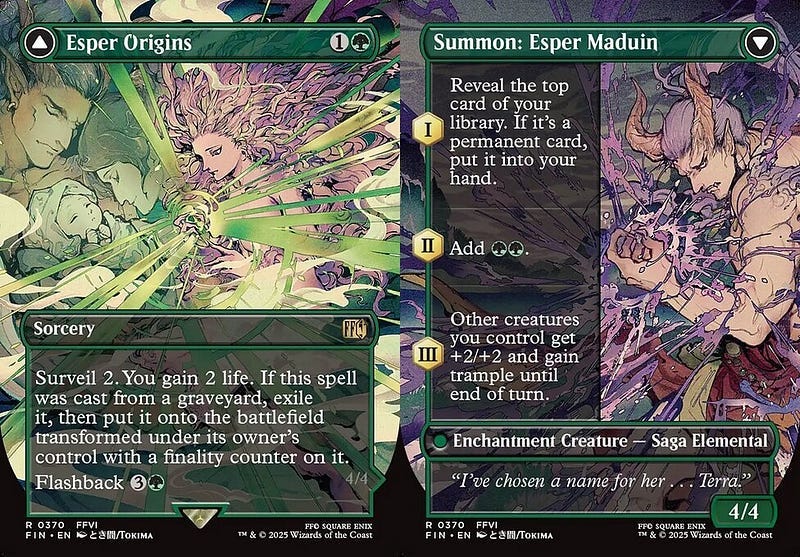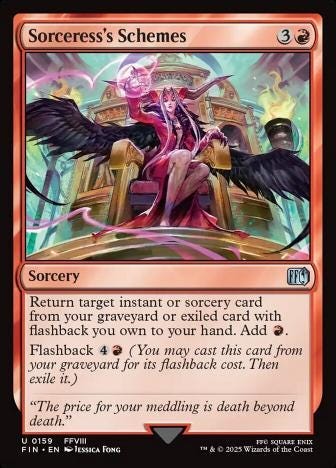“I am a cage, in search of a bird.” — Franz Kafka
There’s nothing more celebrated in magic than a player who scraps out a win with the odds stacked against them. Whether that’s finding an out to win in a deeply unfavored matchup, clutching up on the mull to 5, or salvaging a horrible draft seat, triumph through adversity always feels incredible.
However, if your goal is to spike a tournament, it’s usually more important to be able to capitalize on scenarios where things do go your way. At any given tournament, there’s going to be numerous players who run hot as the sun, but there’s only ever going to be one champion.
Likewise, there are going to be a great number of people who sit down for their draft at the Pro Tour, live the dream and P1P1 an Ardyn, Urza, or Dion and promptly 1–2 their draft. For many, it will be because they didn’t understand how to craft the perfect deck to capitalize upon that card’s specific strengths.
While each bomb has a unique impact on the game, I’ve chosen to categorize the bombs’ strengths into five broad categories: Baneslayer, Beater, Finisher, Haymaker, and Equalizer.
The Baneslayer
Baneslayers, from the eponymous angel, are completely unbeatable… aside from the fact that they die to doom blade.
Baneslayers dominate in games where they aren’t answered, but provide zero advantage in games where they are immediately removed. FIN threats Muldrotha, Kenrith and Vincent Valentine will effectively end the game in a turn or two, but can set you back severely on tempo when swiftly removed.
There are three ways to play effectively with a Baneslayer: protection, recursion, and overloading.
Protection is as simple as it sounds, making room for cards that serve the express purpose of protecting your bomb from the opponent’s removal. Magic Damper frequently gets cut from many of my blue decks, but it becomes a high priority if I have a Dion I want to protect. Because these bombs play significantly above their mana value in terms of impact, it’s feasible to sequence off curve to hold up a mana or two for protection.
Recursion allows you to repeatedly ask your opponent if they have a removal spell until they don’t. This is admittedly a less effective practice in 2025 when half of the removal spells incapacitate or exile threats instead of destroying them, but you can definitely side in or out of this plan depending on what removal spells your opponent shows (and likely has in their colors) after game 1.
Overloading is a bit counterintuitive, but the idea is that instead of minimizing your vulnerability to removal, you play into it hard. Your opponent has access to a finite number of hard removal spells, so repeatedly taxing them will eventually allow a board-dominating threat to slip through the cracks. Because of this, Baneslayers have pretty heavy synergy with each other. While it’s preferrable to have a deck full of shiny rares and mythics, less premium ‘dies to removal’ threats like Gaelicat, Balamb T-Rexaur, and even the humble Gigantoad can fill this role nicely.
All in all, accept that your opponent will likely have an answer or two in their draw, but trust in the Baneslayer to bring you to glory in games where you can find a way to keep it on the battlefield.
The Beater
The Beater is a card that doesn’t do anything particularly earth shattering when played, but does a mundane thing so significantly above rate that it can warp the game around it’s rate.
Smuggler’s Copter is a prime example of an extremely efficient Beater. It’s a pretty simple design that would likely be a clunky common at 4 mana, or a pushed uncommon at 3. At 2, you’re getting a game winning bargain. There are some others in FIN that fall into this category such as Jill and the broken uncommon equipment Dragoon’s Lance and Samurai’s Katana.
The best way to use the Beater is to make the game about mana efficiency. Play an aggressive or tempo oriented strategy that aims to uses the tempo the efficient card buys to set up favorable positions for combat tricks and avoid soupy value cards as much as possible.
Another key aspect of these bombs is that they lose all their power when you start disrupting your speed with splashes, as stumbling on even a single mana can take these cards from unfair to reasonable. Similarly, investing excessive mana towards digging for the Beater defeats the entire purpose of it. Just build a no-nonsense deck that will work well whether or not you draw your bomb.
The Finisher
The Finisher is a card that is extraordinarily challenging to cast, but wins a game it resolves in with near absolute certainty. This can take the form of being both high mana value, difficult pips to cast, or both. FIN is ripe with unbeatable finishers like Atraxa, Ardyn, and Knights of the Round.
Finishers are the most impactful cards you can find in a draft, because they often greatly reduce the threat density needed in the rest of your deck to reliably finish games. This is fantastic and by far the greatest value of the finisher — we can just play the most efficient cards available to us without worrying about finding ways to win. However, the finisher also imposes a restriction, they also require a lot of resources.
Getting to 7–8 lands is such an ordeal that you’ll find yourself getting ‘stuck’ with a fatal dead card in hand if you try to play a small game. As a consequence, decks with a conclusive finisher should lend themselves towards playing a big game. Even though Hecteyes is broadly a better card than Undercity Dire Rat, the rat plays considerably better into the plan of generating resources rather than trying to denying your opponent them.
One unintuitive truth about these kind of decks is that we shouldn’t necessarily try to go deep on ramp. A couple of mana dorks are nice, but for an 8 mana bomb Ardyn, we are going to need to go through about half our deck to find the requisite lands anyways, and we also likely need to process about half our deck to draw the finisher. This means we are going to need to survive for a long time, deal at least in part with our opponent’s aggression, and find productive things to do turn after turn, despite being down a card if the finisher is in our hand.
Ramp spells are already subject to a kind of Counting Problem (termed from the seminal Jason Ye article). You need to find both the ramp spell, enough other lands that the ramp spell is accomplishing something other than drawing a land, and the thing to ramp into. In the long term, the ramp spell will help cast your finisher. But in the medium term, the finisher is going to rot in your hand and be a card that doesn’t help your ramp spell generate any value.
Cards that create card advantage such as Combat Tutorial or Call the Mountain Chocobo (this one especially) do a much better job at allowing you to progress your game plan and set yourself up for a position where The Finisher can wrap up the game.
The Haymaker
Haymakers are defined by the vomiting out an absurd amount of value in a way that’s mostly uninteractable. FIN has many massive haymakers such Primeval Titan, Primal Odin, and Kefka.
Because of their immediate impact, Haymakers are a lot lower risk than something like the Baneslayer. The tradeoff is that they don’t have the same kind of unbeatable board presence as the Baneslayer, so they won’t always claw you back from behind if your opponent is doing something really powerful. When your opponent has access to their own value-generating synergies or more board impactful threats of their own, Haymakers can have a muted impact on the game.
As a result, Haymakers love a small game. Set up trades, interact with your opponent’s plays, and deny your opponent the opportunity to develop their own engines and win-cons. When the dust settles, it’s going to be difficult for your opponent’s remaining few cards to match the Haymaker’s impact. Even if they have a removal spell, the value your play generated will often be enough to carry you through the endgame.
The Equalizer
An Equalizer is any bomb that performs exceptionally well in games where you are behind on board. This is most commonly a board wipe, but there are some other cards that fit into this category from previous sets such as Beza. The most compelling examples from FIN are Zenos yae Galvus and Leviathan.
Equalizers are fun because they incentivize you to be as greedy as possible in the construction of the rest of your deck. Having access to a tempo reset button encourages you to take slower, more value oriented cards like Memories Returning instead of picking up a Thunder Magic. They also give you a lot more flexibility to play a higher curve deck, and permission to opt into some synergies that might otherwise be a bit too slow.
There's a bit of an interesting tension in picking up multiple Equalizers. On the one hand, they aren’t that good when drawn in the same game, since one has already reset the board before the other gets used. On the other hand, having multiple Equalizers allows you to be a lot more confident that you’ll see one in any given game, and lean even harder into the greedy stylistic decisions which maximize Equalizers. Overall, I would say they synergize, but you have to think big-picture about whether your really deck supports the plan of being perpetually behind.
Beyond the Categories
Although these categories serve as a good basis to begin your analysis of bombs, cards can more ambiguous in practice. Many of the best cards are so powerful because they combine the strengths of one or more categories.
Sazh is an incredibly efficient Beater that also provides the value of a Haymaker, and Sephiroth can flip to take over the game as a Baneslayer in addition to being a brutal Beater on rate. These versatile cards give you multiple axes to build around them, which provides more flexibility during a draft.
Some cards have even more specific characteristics which require careful consideration in your build. Akroma’s Will encourages you to play a high creature density deck, but also encourages you to play a big game instead of trading off resources for maximum effect. Cryptic Command has devastating modes for any game state, but demands 11+ blue pips in your manabase. Dark Confidant runs away with the game quickly, but can kill you if you don’t support it well with your curve and gameplan.
The best card in all of FIN, Esper Origins, shows how one unique characteristic can completely change how we think about a card.
Case Study: Esper Origins Is Not Okay
Esper Origins is the most egregiously powerful bomb we have seen in years. This might come off as a bit hyperbolic to those looking at 17lands data, where it presently has a 63.8% GIH winrate (only 9th overall in the set).
However, Game in Hand winrate fails to capture the insane visibility this card has in your deck. When properly utilized, it surpasses even the most infamous recent bombs like Bonny Pall, Ugin, and Sunfall.
To give some context, when people think about the most broken limited bombs of all time, names like The Scarab God, Pack Rat, and Umezawa’s Jitte come to mind. I would certainly include all of those, but right there in the pantheon is Mascot Exhibition.
Mascot Exhibition doesn’t have the same game warping power as the previous cards, but offers something completely novel — you will have access to it every single game. Even if it only has half of the game winning certainty of a flashier bomb, you get to build your deck knowing you will always have access to it, and it completely circumvents the greatest weakness of most of the best bombs: needing to draw them!
Milling an Esper Origins feels very good, but it’s difficult to overstate how insanely unbeatable it actually is. It might feel like drawing the best card in your deck, but it’s more akin to casting a 0 mana divination that draws you a card that is agruably better than the best card in your deck (an Esper Maduin that doesn’t need to be cast on the front).
When you pick up an Esper Origins, I would bump up the pick order of any card that mills to an extreme degree, soft forcing some kind of mill subtheme in your deck, preferably GB. Cards like Town Greeter and Shinra Reinforcements go from top commons to cards I would take over almost anything in the set. Doing so will allow you to build a deck where you get to see an Esper Origins almost every game, often not even at the cost of a card.
Unsurprisingly, we see it reflected in the data that when filtering by Games Played in Deck Winrate (GP WR) instead of games in hand, Esper Origins is presently the highest winrate card in the set.
Schemes and Dreams
There’s another aspect of Esper Origins that pushes it into comical territory, the combo with Sorceress’s Schemes. Schemes allows you to recur your Esper Origins multiple times, casting the front half six times, and getting Esper Maduin three times over.
With multiple Schemes, you have access to effectively infinite copies of Esper Origins (and every other spell in your deck), powered out even more efficiently thanks to the ritual on the second chapter of Esper Maduin. The cherry on top is that you don’t need to draw either half of the combo, since both have flashback. If you get an early Origins, I would immediately be on the lookout for red fixing and take Sorceress’s Schemes above almost any card in the set.
Conclusions
I start every draft a cage in search of a bird. While I can hope to open a powerful build around that gives my draft a sense of direction, reality dictates that many drafts don’t have a powerful incentive to pursue an angular strategy and end up defined by card quality.
When that bird flies in, I do everything in my power to make the most of it.
Best of luck,
Neil Estrada


